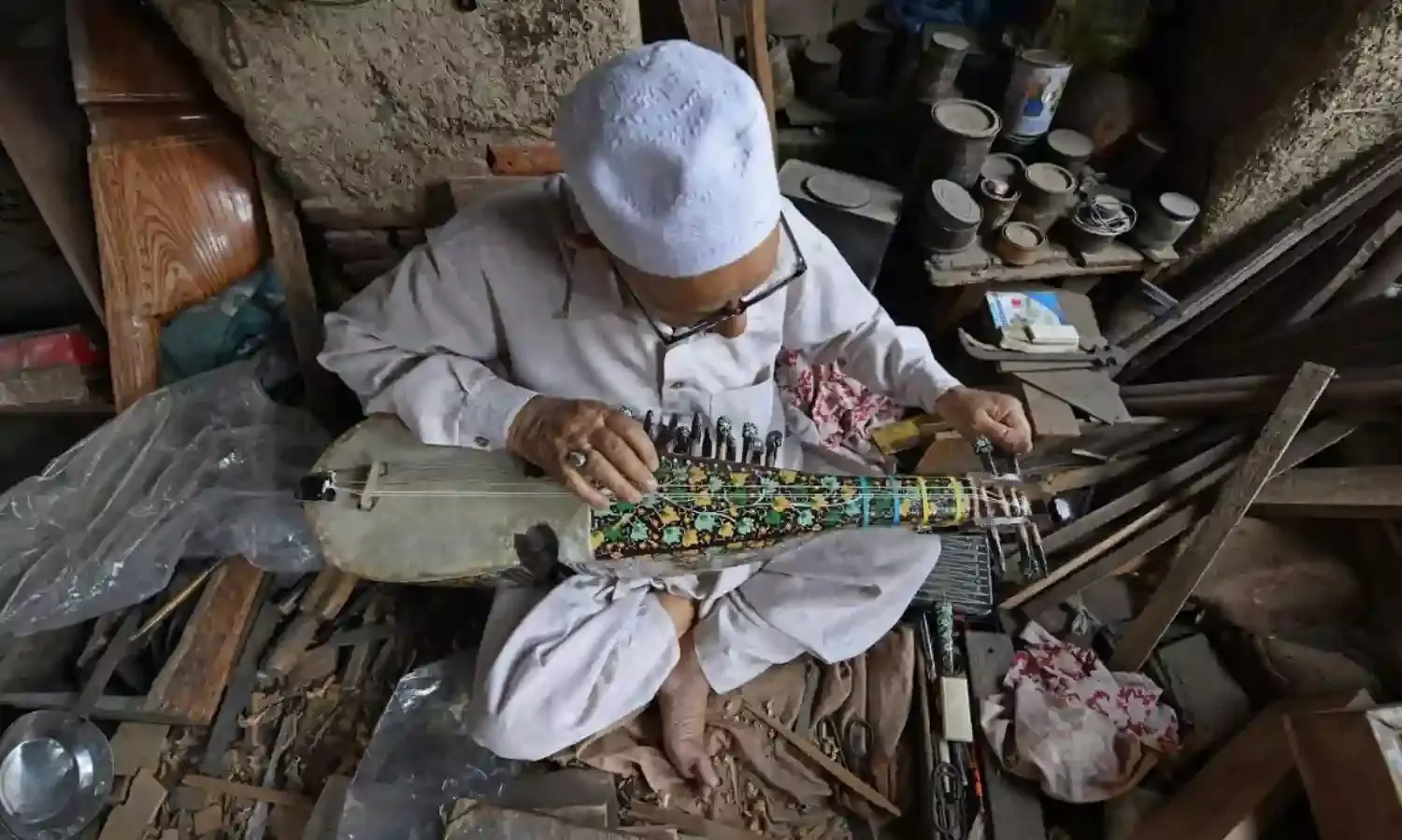Meet Ghulam Mohamed Zaz, Sculptor Of Kashmir’s Best Santoors
He may be the last craftsperson making this instrument by hand

In a dilapidated room on the bank of the Jhelum River in Srinagar, an old man fidgets with strings and pegs. The sounds that fidgeting makes every now and then, breaks the silence that clings to the ancient mud walls. Debris litters his floor, but it does not bother him.
The light that streams in through a small window, illuminates 74-year-old Ghulam Mohamed Zaz’s ageing face and withered fingers. He continues to work, feeling the rough contours of an unfinished santoor.
For three centuries, in this very room, Zaz’s ancestors have made Kashmir's best santoors and rababs. Both of which are recognised the world over as Kashmir's traditional stringed instruments.
Now, Zaz is the last in the line of santoor makers. After him, it is feared, this room, and the tradition it houses, will disappear. “We have been making rababs and santoors for the last 300 years, Zaz said.
“We made the first santoor in Kashmir. All the big artists of the valley played on our santoors,” he claimed proudly. Zaz represents the eighth generation of Kashmir's most famous and respected family of santoor and rabab makers.
For three centuries, his family provided instruments to the valley's most distinguished Sufiana musicians. Ages ago his family worked on creating perfect instruments in a room lit only by candlelight, and Zaz, then a young man, learnt by observing them.
Little did he know that he would one day be called the ‘last master’ of the craft. “I was 15 when I made my first santoor,” Zaz recalled, adding “I observed my father so keenly that one day I just picked up a piece of walnut wood and made a santoor”.
“I would sit across from my father and grandfather and imitate them till I learned to make all the instruments they made. The future held such possibility then,” Zaz added.
“The santoor, which means ‘a hundred strings’ in Persian, came to Kashmir with the Persian invaders of the 15th Century. Various versions of the santoor exist in many parts of the world, differing mostly in terms of the number of strings.
“The Persian santoor now has 72 strings, the Chinese version has 45 and the German has 135,” Zaz explained. The Kashmiri santoor is a trapezoid-shaped hammered dulcimer, the hundred strings of which are struck with a pair of curved mallets known as ‘mezrabs’.
The santoor, along with the rabab, is an integral ingredient of Kashmiri folk and Sufi music. Over the years, as Sufiana music brought sound and beauty to the imperial courts and gatherings of the rich, the Zaz family enjoyed the limelight.
“It was another time,” he remembers proudly adding it was “so different from today. Everyone respected us for our art. We were treated as artists and paid handsomely for our work.”
Today, amid the changing times and fast-paced life in Kashmir, Zaz feels “left behind” in his decaying shop. Today, customers are rare and santoor connoisseurs even rarer.
He points around the room and ruminates on the old days, when his second-story shop, like his life, was brighter and offered more promise. The walls of the room are now blackened from decades of fire used by the family to heat walnut wood into malleability.
Zaz believes the world has forgotten him, leaving him among the unfinished rebabs, santoors and sarangis of a bygone age. “Everyone is making money. They come here and take pictures and write about me, and they all make money. But I get nothing. I doubt if it is worth all the work now.” Zaz said.
He has three daughters, but no son to inherit the family's traditional vocation. His daughters have never learnt the art and have always kept to their studies.
“I'm happy that no son of mine is into this art and that none of my children will have to suffer like I'm suffering. I'm proud that my daughters are part of the new world,” Zaz said, adding that sometimes, months will pass before he sells a single rabab or santoor.
In order to make ends meet, Zaz also repairs other stringed instruments, including sarangis and violins. “Now much of my business depends on tourists and foreign customers,” he said with an air of acceptance.



